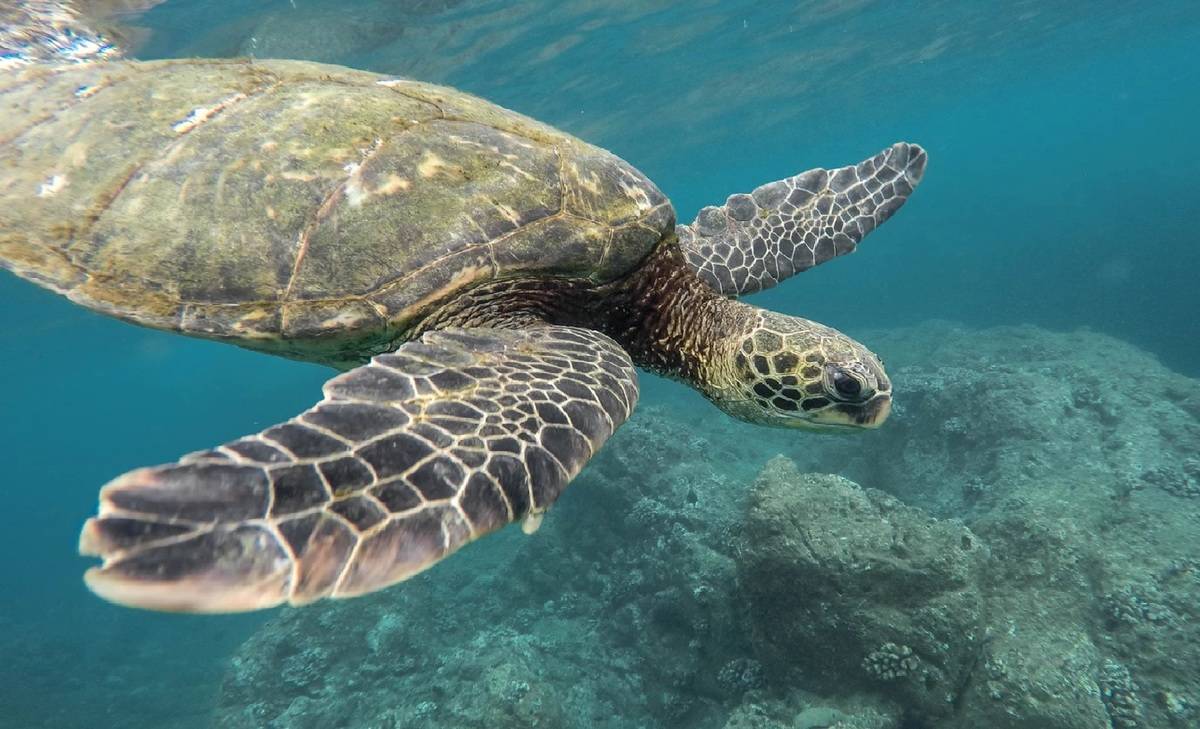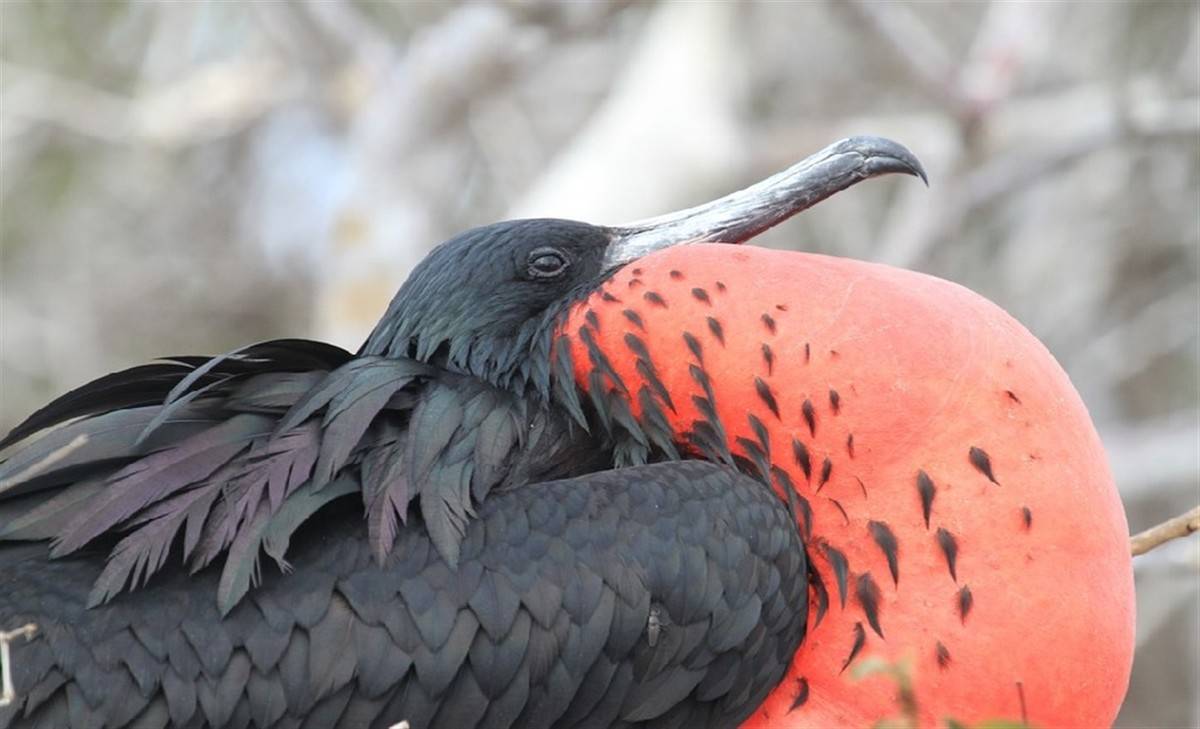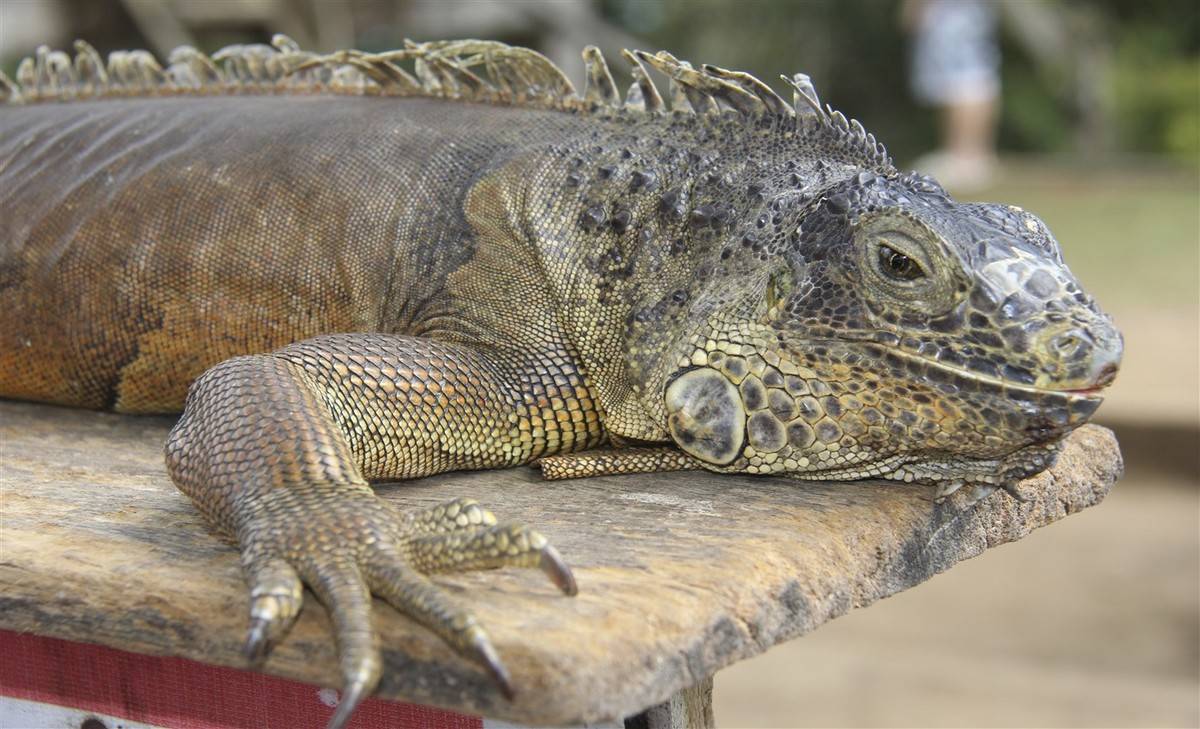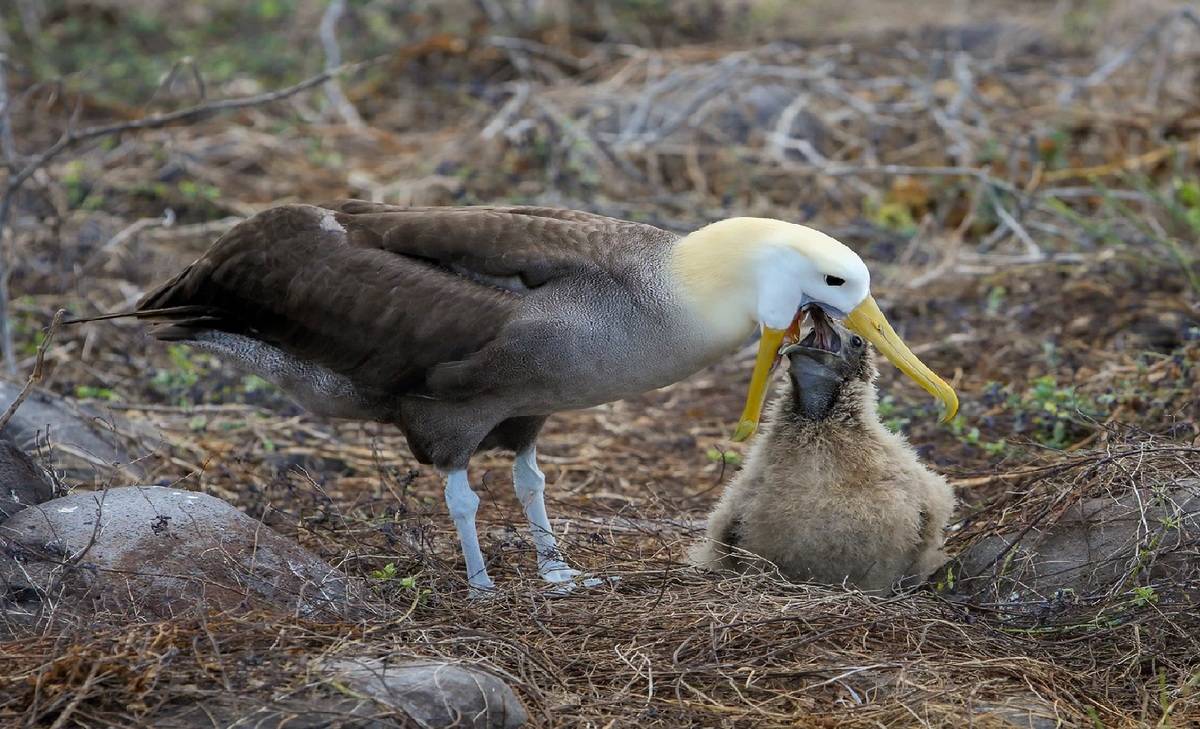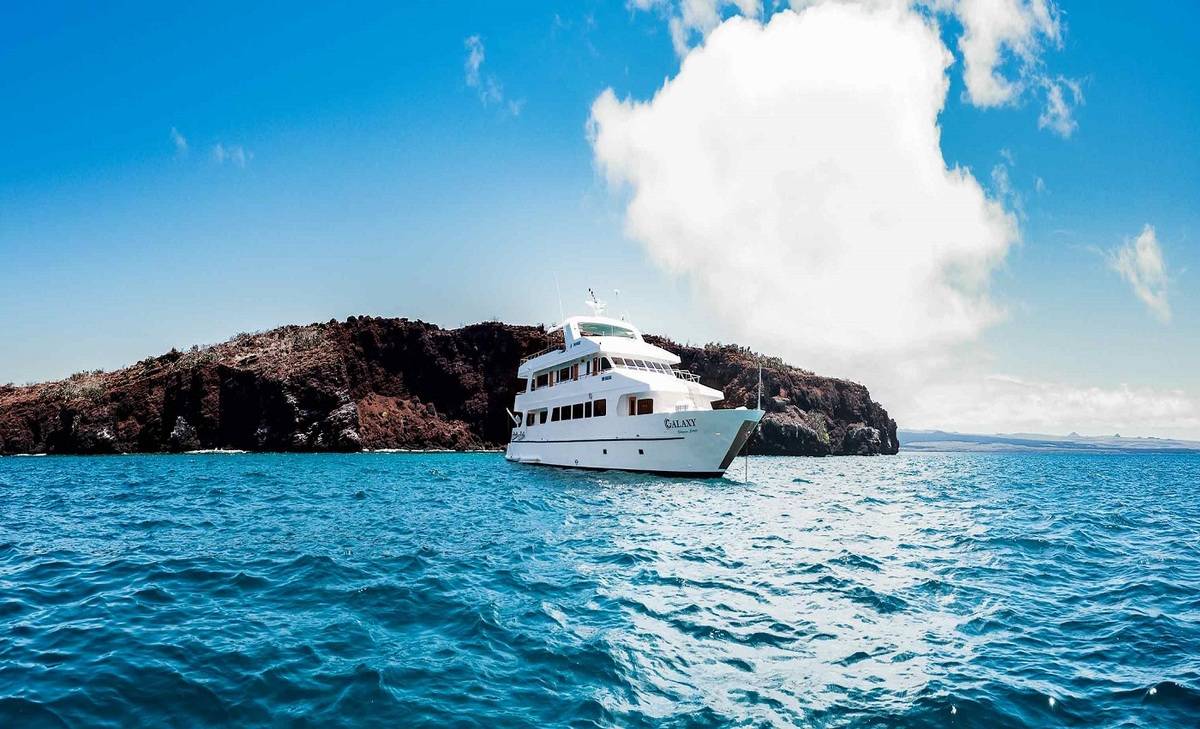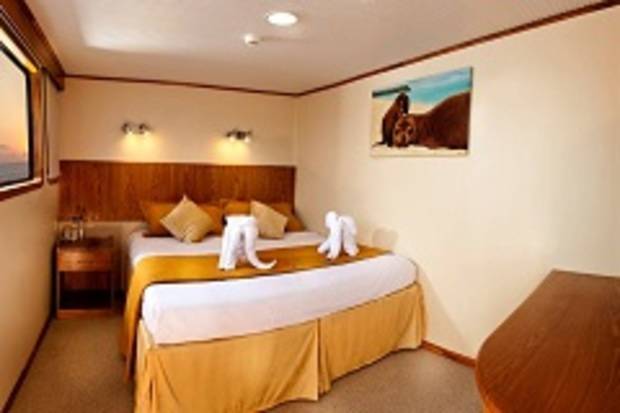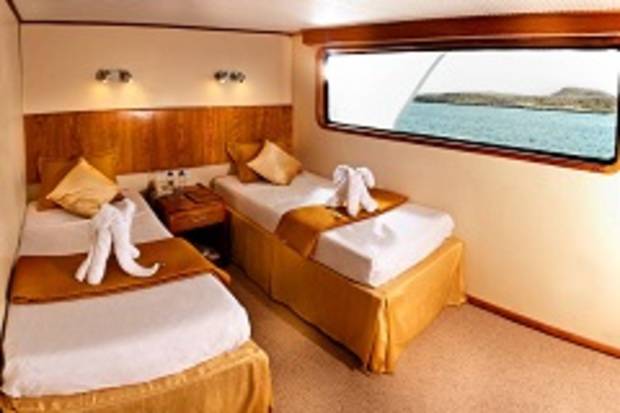Central & Eastern Islands
8 Days - Galaxy Yacht
Journey through the central and eastern islands of the Galapagos aboard the exceptional Galaxy Yacht. Accommodating only 16 passengers, its spacious outdoors will give you the best vantage point to enjoy this incredible destination. Experienced naturalist guides will ensure each day offers another incredible wildlife encounter on this comprehensive cruise.

Home » Galaxy: Central & Eastern Islands
Itinerary Highlights:
- Enjoy the white sand beach of Mosquera Islet
- Opportunities for snorkelling and swimming with marine animals
- Chance to see unique animals that inhabits the islands such as the Albatross, blue footed boobies and sea lions
- See the olivine crystals on the beach of Punta Cormorant
- Visit to the Charles Darwin Station, the breeding centre of tortoises and other endangered animals around the islands
Itinerary in Brief:
- Day 1: Baltra Island - Mosquera Islet
- Day 2: Sullivan Bay (Santiago) & Bartolome Island
- Day 3: El Barranco & Darwin Bay (Genovesa)
- Day 4: Interpretation Centre & Lobos Island (San Cristobal)
- Day 5: Gardner Bay & Suarez Point (Espanola)
- Day 6: Post Office Bay & Cormorant Point
- Day 7: Santa Fe & South Plaza
- Day 8: Charles Darwin Station (Santa Cruz)
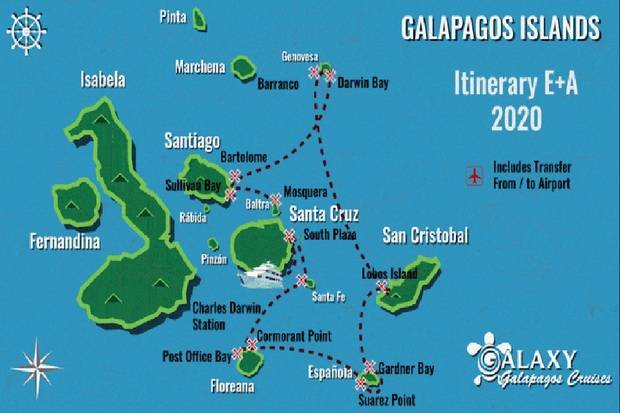
Day 1: Baltra Island - Mosquera Islet
Arrive at Baltra airport then transfer in. This islet is located between Baltra Island and North Seymour. Here, we find the biggest sea lions colony; and possibly observe several species of birds. This island is perfect for hiking or enjoying the lovely white sand beach. We will then be returning to the boat later on for dinner.
Day 2: Sullivan Bay - Bartolome Island
Wet landing. After breakfast we will head out to Sullivan Bay. Here we will see that most of the roads and lands look like molten rocks. This is because the lava covered an extensive area of the island which has made it harder to erode. Most sceneries will be seen through hiking around the mountains on the island.
We will be walking approximately 114 metres on an upward path where you can observe the unique flora that grows on the island such as tiuilia, chamesyce, and scalesia. Once we reach the top, you will be able to see its neighbouring islands: Santiago, Rabida and Isabela, as well as penguins on the Pinnacle Rock. After this, we will be going through the mangrove swamps and vegetation of dunes to get to the south beach.
Day 3: El Barranco - Darwin Bay
Also known as Prince Phillip’s stairs, after breakfast we will be heading out to Barranco Bay. During our hike through the Barranco path, you will find remarkable wildlife such as tropical birds, petrels, common frigate, red-foot boobies, mask boobies, dove, and finches.
Wet landing on the bay. The Genovesa is a small island situated on the north of Galapagos. There is a small forest of mangrove swamp near the beach where you will find a colony of Frigates, marine iguanas, red-foot boobies and mask boobies, the great terrestrial finch, seagull, herons, finch of cactus. After this visit in-land, passengers will have the option of swimming in the bay.
Day 4: Interpretation Center - Lobos Island
After breakfast, we will be visiting the Interpretation Centre which is located on the main port of San Cristobal (wet landing). Here, you will find the most modern and sophisticated architectural space destined for the natural interpretation of Galapagos. You can learn the volcanic formation of the islands, the evolution of the species, the history of human settlements on the islands, and understand its complex systems and model of management.
At the beautiful Lobos Island, we can walk, swim and snorkel among the seals, frigates, marine iguanas, lava lizards, and the small endemic Galapagos snake.
Day 5: Gardner Bay - Suarez Point
Gardner Bay offers plenty of activities, including a short walk, swimming, snorkelling, and observation of seal colony. While snorkelling, we will be able to swim with sea lions, sea turtles, a diversity of tropical fish and marine iguanas.
There's nothing more amazing and outstanding than the colourful blue-footed boobies at Suarez Point. Here, we can admire the beauty of this bird as its nests and feeds on the many areas located along the coast. Another famous bird on the island is the Albatross. Having a weight of about three to four kilograms and a wingspan of approximately two metres long, this creature of aristocratic nature is one of the largest birds on the island. An estimate of about twelve thousand birds have their nests on the Españonal Island (some are located on Silver Island near of main land Ecuador). During our walk, not only will you be able to observe these fantastic birds but also admire the beautiful landscape that the island has to offer. Other inhabitants of this area, unique only to the island, includes colonies of marine iguanas, zayapas, mask boobies, finches, Española cucuves, and seagulls. As we continue our tour, we will be walking through the lava rock path where we will be able to see the famous hollow blowers.
Day 6: Post Office Bay - Cormorant Point
Post Office Bay is located on the north side of Floreana Island. Captain James Colnett installed an empty barrel to be used as a post office for the whaling fleets that stopped at the Galapagos Islands. You can leave postcards to your friends and relatives here and/or pick up mail to deliver.
Cormorant Point is located at west of Floreana Island and is famous for its dark green beach (due to the great quantity of olivine crystals).You can see many marine invertebrates, as well as sea lions, sea iguanas, the frigates and pelicans.
Day 7: Santa Fe - South Plaza
Wet landing in Santa Fe Island. With a sixty meter height above sea level, this island is home to some of the most unique places in the Galapagos. Here you will see an incredible bay with turquoise water protected by a natural barrier of rocks and from which you can appreciate colonies of seals and hawks flying over. It is also home to one of the two species of land iguanas found on this island whose main diet consists of leaves, large fruits and thick cactus. The Bay is excellent place to swim and to go snorkelling. If you're lucky, you might be joined with marine tortoises, rays, sea lions and tropical fish.
After lunch, we will be heading out towards the South Plaza Island. The island is made up of two small islands, created by an uplift. During our hike along the extraordinary cliff, you will be able to observe several sea birds nests. You will also be able to see sea lions located on the south side of the Plaza which, according to locals, are approximately 1,000 in number.
Day 8: Charles Darwin Station
Charles Darwin Station is located in the Main Port of Santa Cruz Island. A private bus will be taking us to the entrance of the centre of the breeding area where we can appreciate tortoises and land iguanas in captivity. This centre is the main breeding site of the island, where animals that were in danger of extinction in the different islands are maintained in captivity and thanks to the dedicated work of several institutions some species were saved. Also, it was here where the most famous tortoise, “The Solitary George” the last survivor of the species of Pinta Island, lived.
Transfer to the airport for departure.
Cabin Details
Lower Deck Cabin
18m2, twin beds or double bed, private bathroom with cold/hot water, air-conditioning, hairdryer, telephone for internal communication, safe box and high speaker.
Main/ Upper Deck Cabin
13-15m2, twin beds or double bed, private bathroom with cold/hot water, air-conditioning, hairdryer, telephone for internal communication, safe box and high speaker.
Galaxy Yacht Deckplan
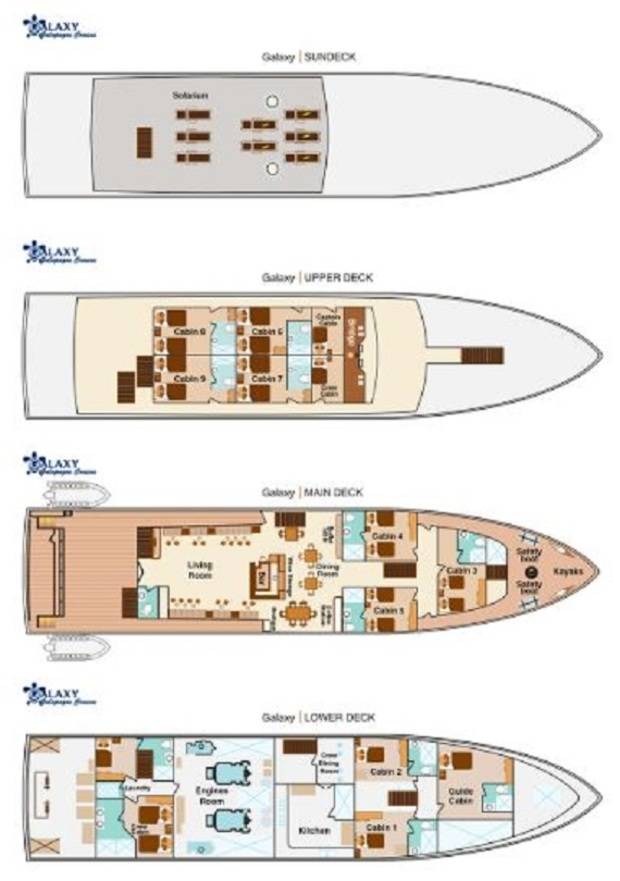
Specifications
- Length: 35 metres
- Beam: 7.60 metres
- Capacity: 16 passengers
- Crew: 8 members + 1 bilingual guide
- Cruising speed: 12 knots
- Engines: 2 Cumming Motors 350HP
- Electric power: 110V and 220V
Whats included?
- Shipboard accommodation
- Airport Assistance
- Airport and hotel transfers in Galapagos
- All meals throughout the voyage
- Professional Bilingual Guide Level II
- All shore and land excursions specified in program
- Snorkel Gear (mask, tube, fins)
- Kayak
- Purified water, coffee and tea available during the cruise
- Wet suit
- Paddle board
What’s not included?
- Air transportation
- Passport, visa and immigration fees
- Airport arrival/departure taxes
- Travel protection plan
- Additional hotel nights
- Galapagos National Park Entrance Fee US$100 per person
- Galapagos transit card US$20 per person
- Alcoholic and non-alcoholic beverages
- Gratuities
- Any items not listed as included



